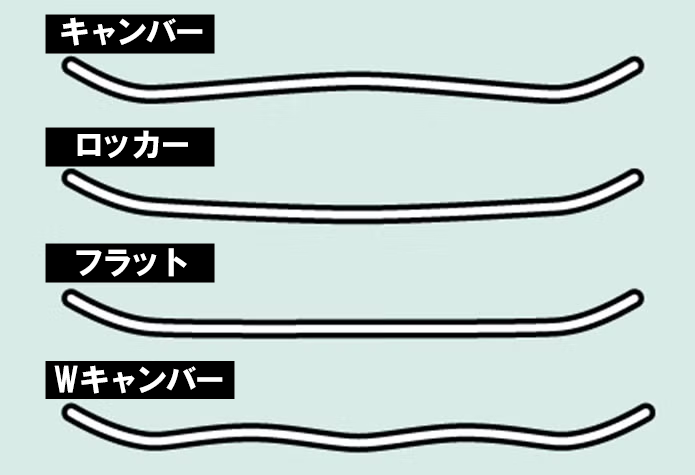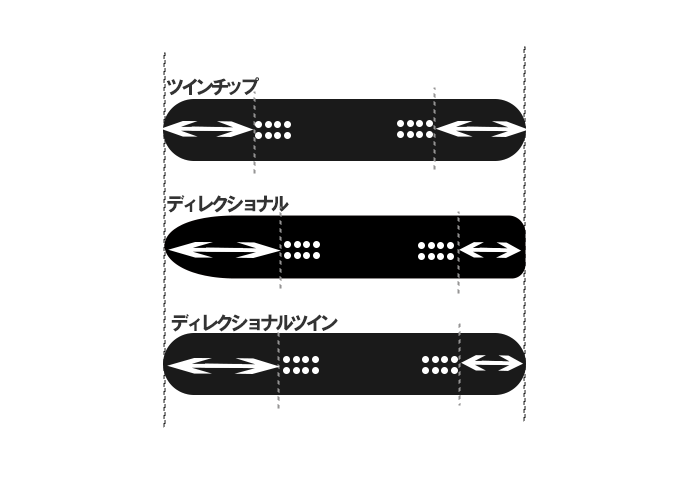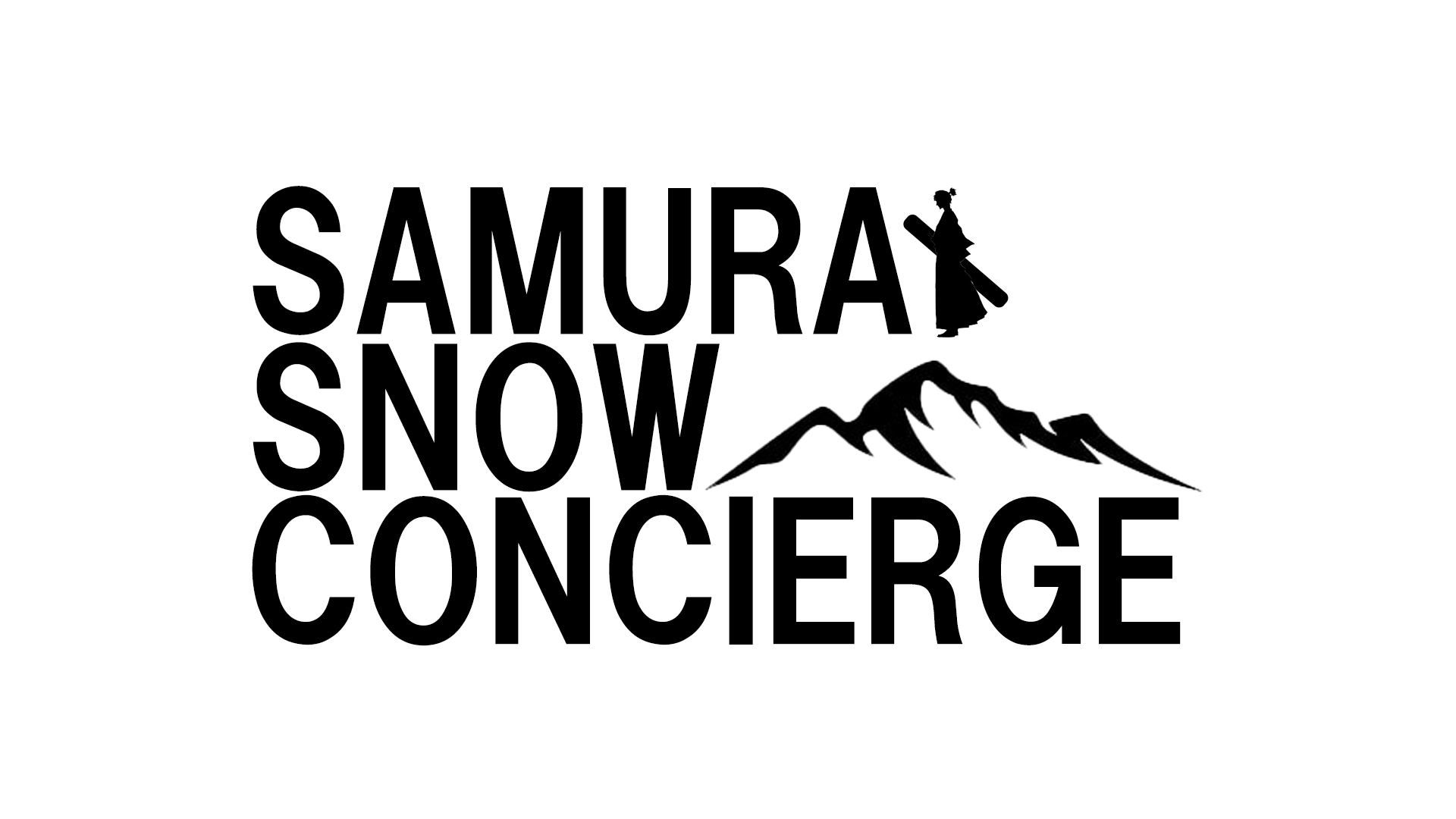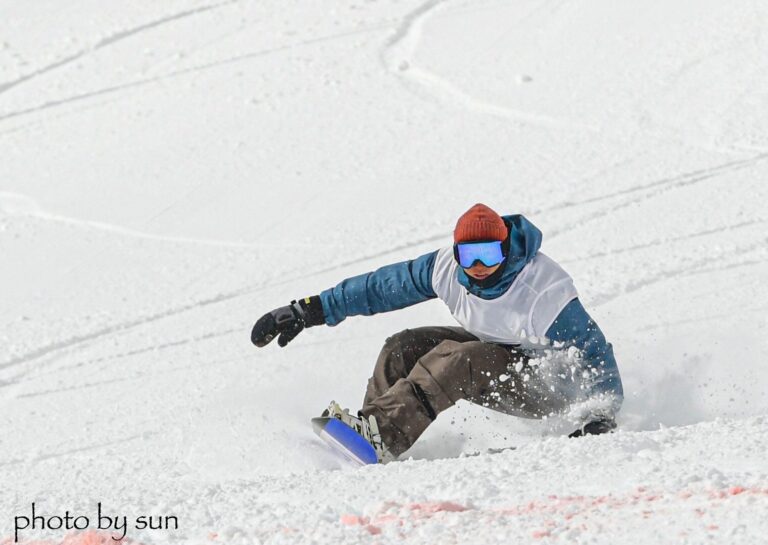You’ve gotten used to turning, and now you’re thinking: “I want to try some real, sharp carving turns!” If that sounds like you, you’re definitely not alone.
Carving turns—where you tilt your board deep into the snow and throw your whole body into the turn—are something every snowboarder dreams of.
Technically, you can carve on almost any board. But if you really want to master carving, it’s way more efficient (and fun) to practice on a board that’s designed for it.
That’s why, as active Class A instructors, we’ve put together a guide on how to choose a carving-friendly snowboard and our top recommendations. We’ll introduce boards for carving beginners, intermediates, and advanced riders—so check out the lineup that best fits your current level!
Key Points for Choosing a Carving-Friendly Board
If your only goal is carving, then an alpine board—a board specialized just for carving—would be ideal.
But let’s be real: most riders also want to try ground tricks, hit the park now and then, and basically do everything with one board.
So in this article, we’ll focus on all-round boards that are carving-oriented but still versatile. Let’s break down what makes an all-round board suitable for carving.
Flex (Stiffness)
Board stiffness is crucial for carving.
A board that’s slightly stiffer than average is recommended. Too soft, and you won’t have stability at speed. Too stiff, and beginners will struggle to control it. For carving beginners, a flex rating around 3 is a good balance.
The reason stiffer boards are preferred for carving is that they stay stable at high speeds. Softer boards tend to chatter and lose edge grip, making carving harder.
Board Profile
The best profile for carving is camber.

Snowboards generally come in four main shapes: camber, rocker, flat, and hybrid (W camber). Carving requires pop and rebound, which camber boards provide.
Since the center of a camber board is lifted, pressing into the middle creates natural flex, letting the edges dig into the snow. This also helps with smooth and powerful edge-to-edge transitions.
Board Shape
There are three main shapes: directional, twin tip, and directional twin.

For carving, directional or directional twin is ideal. Carving naturally involves higher speeds, so you want a shape that stays stable. Directional boards have a longer nose, shifting your stance slightly back for more stability.
Effective Edge (Length)
A slightly longer board—or more specifically, a board with a longer effective edge—is better for carving.
The effective edge is the length of edge actually in contact with the snow when you’re riding. Longer = more stability. Shorter = easier maneuverability.
Boards like hammerhead shapes are known for having longer effective edges and are popular among carving specialists. But since they’re harder to handle, beginners are better off with a standard round nose board.
Recommended Boards for Carving Beginners
YONEX SMOOTH
As the name suggests, the SMOOTH offers smooth, stable, and highly controllable performance. Lightweight, strong, and responsive thanks to YONEX’s carbon tech, this board reacts precisely to rider input.
Perfect for beginners who want to seriously get into carving while still enjoying park and pipe. The ride quality evolves as your skills improve, so you can keep progressing with the same board.
Shape: Directional Twin
Profile: Camber
BURTON CUSTOM
One of the most famous snowboards in the world, the BURTON CUSTOM is a true all-rounder. Slightly stiff yet manageable, it provides amazing stability at speed and on steep slopes.
At first, the stiffness may take getting used to, but once you adapt, you’ll love the explosive ollies and rock-solid carving.
Shape: Directional Twin
Profile: Camber
SALOMON ASSASSIN
The ASSASSIN is super easy to press into and control, making it an excellent choice for carving beginners. Its construction helps riders learn the feel of “pressing into the board,” which is crucial for carving.
As you train on it, you’ll naturally develop the sense of pressure, edge grip, and centrifugal force that makes carving fun.
Shape: Directional Twin
Profile: Rock Out Camber (hybrid camber/rocker)
NOVEMBER AIRTIST
The AIRTIST is a high-spec board that does it all—free riding, carving, ground tricks, and park.
While it’s a twin tip, its full camber profile makes carving accessible and stable. Perfect for beginners who want to try carving without giving up versatility.
Shape: Twin Tip
Profile: Full Camber
Recommended Boards for Carving Intermediates
OGASAKA CT
A legendary Japanese-made board, the CT (Comfort Turn) offers smooth, powerful carves with minimal effort. Responsive yet easy to flex, it’s popular among both pros and female riders.
Shape: Directional
Profile: Camber
BC STREAM S
A hybrid camber design that adjusts effective edge length depending on pressure. This makes the S excellent for both carving grip and versatility in tricks.
Shape: Directional Twin
Profile: Hybrid Camber
MOSS KING
MOSS is iconic in the carving scene, and the KING is their all-round carving model. Responsive and lively, it’s perfect for those who want to master carving while still enjoying freestyle.
Shape: Directional
Profile: Camber
SALOMON HUCK KNIFE
Though known as a park board, the HUCK KNIFE also delivers great carving for intermediates thanks to its camber profile. Fun, playful, and versatile for riders developing overall skills.
Shape: Twin Tip
Profile: Camber

I ride the HUCK KNIFE myself, and it made carving, kickers, and tricks all way more fun!
YONEX REV
Lightweight, stable, and incredibly responsive, the REV is packed with YONEX’s carbon technology. A stiff, high-performance board for intermediate and advanced riders who want explosive pop and stability at speed.
Shape: Directional Twin
Profile: Camber
Recommended Boards for Carving Experts
OGASAKA FC
The FC (Full Carve) is purpose-built for carving. Semi-hammerhead shape, long effective edge, and top stability even on rough terrain.
Shape: Directional + Semi-Hammer
Profile: Camber
YONEX THRUST
Featuring a semi-hammerhead design and advanced carbon vibration absorption, the THRUST excels on any snow condition. EasyRide Camber profile balances edge grip and smooth release.
Shape: Directional + Semi-Hammer
Profile: EasyRide Camber
MOSS TWISTER
A competition-level board famous in the carving scene. The TWISTER is hammerhead-shaped, delivering razor-sharp turns and trusted by many in technical championships.
Shape: Directional + Hammer
Profile: Camber
GRAY DESPERADO
Another carving legend, the DESPERADO uses a hammerhead design for automatic, powerful carving. Best suited for riders who already have solid carving fundamentals and want to push to the next level.
Shape: Directional + Hammer
Profile: Camber
Other Gear & Tricks to Improve Carving
Not ready to buy a new board? Or maybe you just got a new one already? Don’t worry—there are accessories and setup tweaks that can dramatically improve your carving.
Carving Plates
Placed between the board and bindings, these increase leverage, edge grip, and stability. They also help reduce boot drag.
Power Ride Inserts
Placed inside your boots, these stiffen them for quicker response—especially useful for heel-to-toe turns.
Forward Lean Adjustment
Tweaking the forward lean of your bindings increases heel edge responsiveness. Great for experienced riders chasing deeper carves.
Setback Stance
By moving your bindings slightly toward the tail, you shift your weight back, making it easier to press into the nose and carve—even on twin boards.
Conclusion
We’ve introduced carving-friendly boards for beginners, intermediates, and advanced riders.
Carving is a fundamental yet deep skill in snowboarding, and once you start mastering it, the sport becomes even more fun.
If you’re unsure which board to pick, want carving tips, or need help with the basics, feel free to reach out to us instructors anytime. See you on the slopes!




















コメント